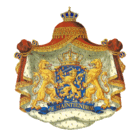Estates-General of the Netherlands
|
|
| Monarchy |
| First Chamber Second Chamber Cabinet |
| Prime Minister |
| Political parties |
| Elections |
The Estates-General (Staten-Generaal) is the parliament of the Netherlands. It consists of two chambers, the most important of which is the Tweede Kamer (the Second Chamber or Lower House). The Eerste Kamer (the First Chamber or Upper House) is also known as the Senate. The meeting rooms of the Staten-Generaal are located at the Binnenhof (Inner Court), all in the Hague.
Historically the convocation of the Estates-General (Staten-Generaal), consisted of delegates from the provincial estates, and dated from about the middle of the 15th century, under the rule of the dukes of Burgundy. The name was transferred, after the separation of the northern Netherlands from the Spanish dominions, to the representatives elected by the seven sovereign provincial estates for the general government of the United Provinces. The States-General, in which the voting was by provinces - each province having one vote - was established from 1593.
The States-General in this form came to an end after the revolution in 1795, with the proclamation of the Batavian Republic and the subsequent convocation of the National Assembly (March 1, 1796). The title of Staten-Generaal, however, continued in the title of subsequent Netherlands parliaments.
Original text from 1911 Encyclopaedia Britannicanl:Staten-Generaal van het Koninkrijk der Nederlanden ru:Генеральные штаты (в Нидерландах) sv:Generalstaterna

